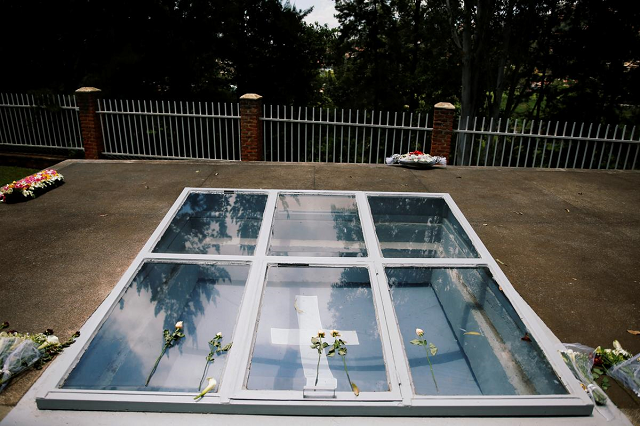
The ceremony marks the beginning of a week of events to honor the dead. Rwandan President Paul Kagame is scheduled to lay a wreath at Gisozi genocide memorial site, where over a quarter a million of people are buried.
In the afternoon, officials will join around 2,000 people in a “walk to remember” from parliament to the national soccer stadium, where candles will be lit in a night vigil.
At least 10 heads of state were expected to attend, Stephanie Nyombayire, head of communication at the president’s office, told journalists on Saturday. Canadian Governor General Julie Payette and European Commission President Jean-Claude Juncker were also expected.
The 100 days of slaughter began on April 6, 1994, after President Juvenal Habyarimana and his counterpart Cyprien Ntaryamira of Burundi - both Hutus - were killed when their plane was shot down over the Rwandan capital. The attackers have never been identified.
The attack mobilised Hutu government soldiers and allied extremist militia, who orchestrated the genocide to exterminate the Tutsi minority.
In villages across the densely populated country, neighbor turned on neighbor as men, women and children were hacked to death, burned alive, clubbed and shot.
Myanmar army chief must be prosecuted for Rohingya genocide': UN rights envoy
As many as 10,000 people were killed daily. Seventy per cent of the minority Tutsi population was wiped out, and over 10 per cent of the total Rwandan population.
The fighting ended in July 1994 when the Rwandan Patriotic Front (RPF), a Tutsi-led rebel movement led by Kagame, swept in from Uganda and seized control of the country.
Official policy is to strongly discourage any talk of ethnicity, but the opposition says the tight control of the media and political sphere is also used to stifle dissent, something the government denies.
1730360426-0/Menendez-Brothers-(2)1730360426-0-405x300.webp)






















COMMENTS
Comments are moderated and generally will be posted if they are on-topic and not abusive.
For more information, please see our Comments FAQ